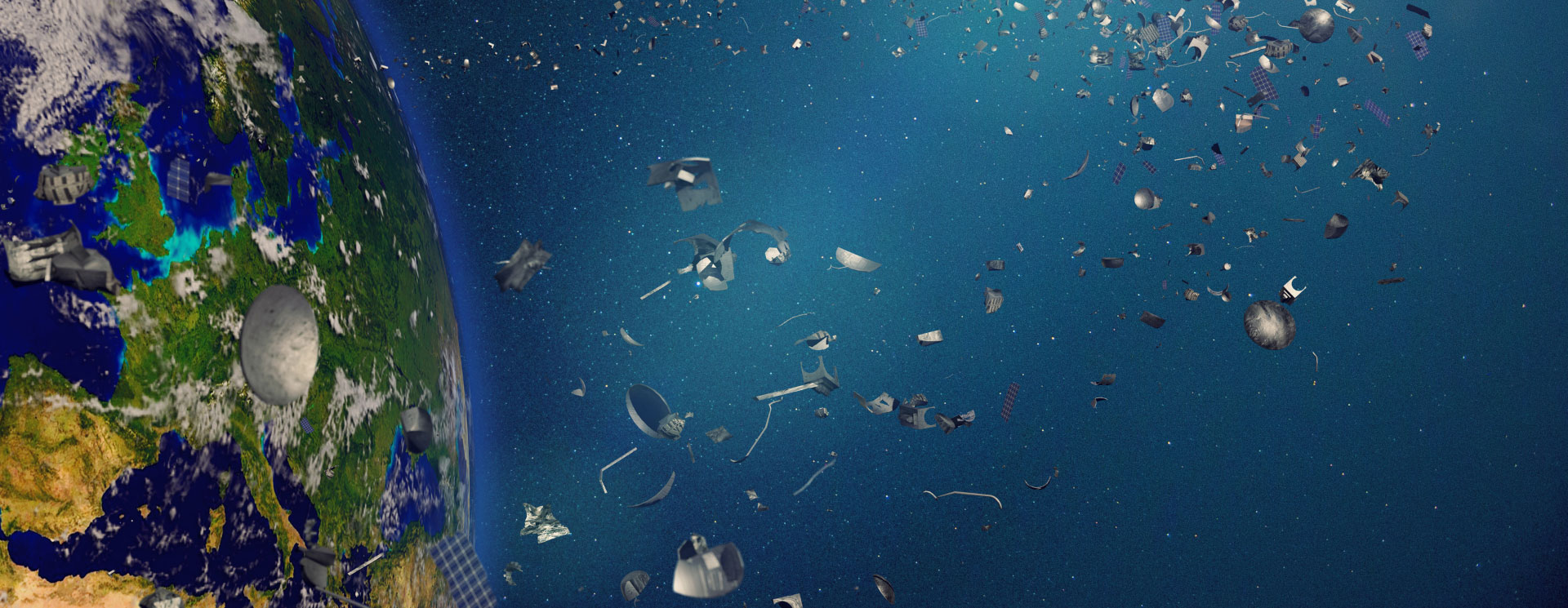The Danger Above: Exploring the Threat of Space Debris


Profen
The vastness of space that has always been an object of fascination for humanity has now become a source of great danger for the future of life on Earth. The accumulation of space debris, consisting of defunct satellites, rocket stages, and other man-made objects, is posing a serious threat to the functioning of active satellites, which are essential for modern-day communication, navigation, weather forecasting, and national security. With increasing awareness of the dangers of space debris, many research projects and initiatives are underway to mitigate this hazard. However, the collection and removal of debris from space remain an enormous technological and financial challenge.
The space around our planet is becoming increasingly cluttered with man-made debris. This debris, also known as space junk, is made up of defunct satellites, spent rocket stages, and other debris generated by human activities in space. The danger posed by this debris cannot be overstated. Not only does it threaten the safety of active satellites and spacecraft, but it also poses a threat to human life on Earth. The problem is compounded by the fact that space debris cannot be collected easily, and the longer it stays in orbit, the greater the risk of a catastrophic event, such as the Kessler Effect.
The Catastrophic Domino Effect: Understanding the Kessler Syndrome
The Kessler Effect is a hypothetical scenario where the density of space debris in low Earth orbit becomes so high that collisions between objects could create a cascading effect, leading to an exponential increase in debris and making space activities virtually impossible. This theory was first proposed by Donald J. Kessler, a retired NASA scientist, in 1978.
According to Kessler, even a single collision in space can create thousands of smaller fragments, which in turn can lead to further collisions and more debris. As the amount of debris increases, so does the likelihood of additional collisions, which in turn generate more debris, and so on, creating a self-sustaining chain reaction.
In recent decades, there have been several incidents that have generated significant amounts of space debris which could initiate that chain reaction. In 2007, China conducted an anti-satellite missile test that destroyed one of its own satellites, generating thousands of pieces of debris. In 2009, the collision between the Iridium 33 and Cosmos 2251 satellites generated more than 2,000 pieces of trackable debris. In 2019, India conducted an anti-satellite missile test, generating more than 400 pieces of debris.
The concern is that as the amount of debris in orbit increases, the likelihood of further collisions and the cascading effect of the Kessler Syndrome becomes more and more likely. This could have serious consequences for space operations, including damage to satellites, loss of critical communication and navigation services, and increased risk to manned space missions. As a result, there is a growing effort among space agencies and private companies to develop technologies to remove space debris and prevent the Kessler Syndrome from occurring.
Technologies for Space Debris Removal and Prevention: Real-Life Examples
There are several main technologies being used for space debris removal and prevention, and many space agencies and private companies are actively researching and developing these technologies. One method is called Active Debris Removal (ADR), which involves capturing and removing debris from orbit. One example of this technology is the RemoveDEBRIS mission, led by the Surrey Space Centre in the UK, which launched in 2018 and ended in 2021. The mission included a net and harpoon system to capture debris, as well as a dragsail to slow down the debris and bring it back to Earth’s atmosphere to burn up upon reentry.
Another technology used for space debris removal is called Passive Debris Removal (PDR), which involves designing satellites and other objects in space to minimize the amount of debris generated during and after their operational lifetime. One example of this technology is the ESA’s Clean Space initiative, which aims to develop design guidelines and technologies to minimize the environmental impact of space missions. This includes developing materials that are more resistant to impacts and designing satellites to be more easily deorbited at the end of their lives.
A third technology used for space debris prevention is called Space Traffic Management (STM), which involves tracking and coordinating the movement of objects in space to reduce the risk of collisions. This includes predicting and avoiding potential collisions, as well as controlling the placement and orbits of satellites and other objects in space. One example of this technology is NASA’s NASA Spacecraft Conjunction Assessment and Collision Avoidance program, which aims to develop new algorithms and tools to improve space traffic management and reduce the risk of collisions.
Overall, these and other technologies being developed and implemented by various space agencies and private companies are crucial for mitigating the risks of space debris and ensuring the long-term sustainability of space activities.
Overcoming Obstacles in Space Debris Removal: Technology and Regulations
Despite the various initiatives undertaken by space agencies worldwide, the removal of space debris remains a challenge due to various reasons, including the technical and regulatory complexities of the issue.
Technological challenges in space debris removal are numerous, including the development of reliable and efficient debris capture and removal systems. Current technologies such as nets, harpoons, and robotic arms are not sufficient for the removal of large and heavy debris. New technologies are being developed, such as electrodynamic tethers, laser ablation, and ion beams, which may prove to be more effective in capturing and removing debris. However, these technologies are still in the experimental stage and require significant funding and development time.
Regulatory challenges are also significant in space debris removal, as there are currently no universally accepted standards or regulations for the removal of space debris. The Outer Space Treaty, ratified by 110 countries, states that states are responsible for the actions of their space activities, including debris. However, the treaty lacks specific provisions for space debris removal, making it difficult to enforce regulations. The lack of regulations also makes it challenging to coordinate international efforts to remove space debris, as each country has its regulations and priorities for debris removal.
Moreover, financing and incentivization of space debris removal programs are also obstacles. The cost of developing and launching a space debris removal system can be significant, and there is little economic incentive for companies or governments to invest in such programs. A possible solution could be to create a system of financial incentives or insurance schemes that reward companies or countries for removing debris from orbit.
The successful removal of space debris demands the collaborative efforts of space agencies, governments, and private corporations. Technological advancements in debris capture and removal systems are necessary, but so too are regulatory standards that encourage cooperation and investment. Overcoming these obstacles is essential to ensuring the sustainability and safety of space activities for future generations.
Towards a Cleaner and Safer Space: The Urgent Need for Space Debris Removal and Prevention
In conclusion, the issue of space debris is a critical one that poses significant threats to the sustainability of space activities and the safety of human life on Earth. As the amount of space debris continues to grow, it is vital that we take immediate action to address this challenge. Fortunately, there are ongoing efforts by various space agencies, governments, and private companies to develop and implement technologies for space debris removal and prevention. However, there are still significant obstacles to overcome, including regulatory and financial barriers.
As we move into the next decade, it is crucial that we continue to prioritize space debris removal and prevention initiatives. The dangers of space debris are real and increasing with every launch into space. It is not only a threat to our space missions, but also to the safety of our planet and all of its inhabitants. Without proper action, the Kessler Effect could become a catastrophic reality, leading to a future where space travel is no longer possible. It is only through coordinated efforts and innovative technologies that we can ensure a sustainable and safe future for space exploration. We must invest in research and development of new methods for space debris removal and regulations to prevent the creation of new debris. Only then can we achieve a cleaner and safer space environment for all.
